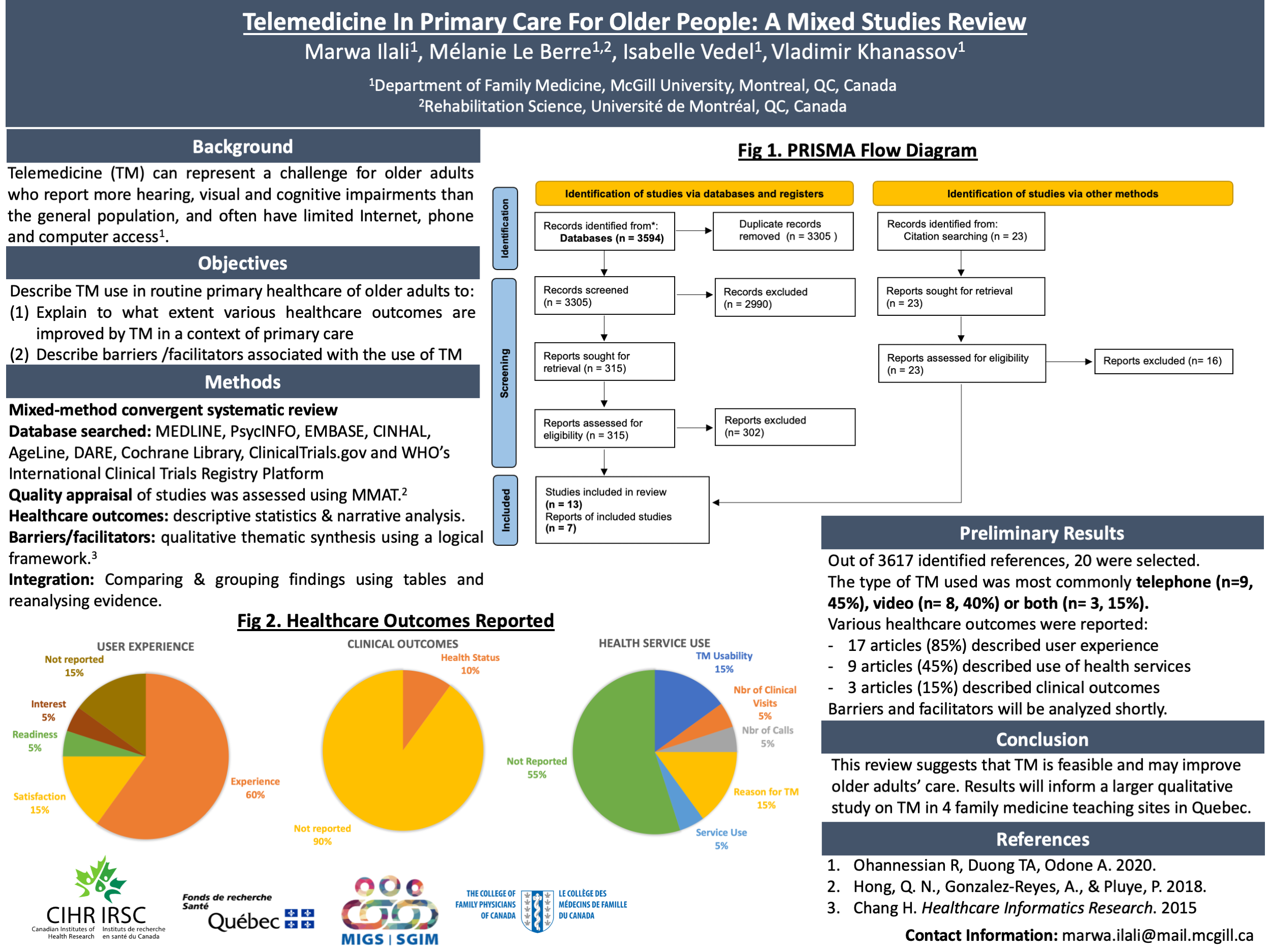SRFP095: Telemedicine in Primary Care for Older Patients: A mixed studies review
Marwa Ilali; Melanie Le Berre, MSc; Isabelle Vedel, MD, PhD; Vladimir Khanassov, MD, MSc
Abstract
Context: The COVID-19 pandemic has significantly impacted the delivery of primary health care services. As many family physicians pivoted their services to a virtual health care model, the ongoing pandemic has indicated the importance of developing a comprehensive remote care method. Telemedicine (TM) has the potential to improve the quality of primary health care and to increase its accessibility to the general population. However, it may pose unique challenges for older patients, such as those associated with potential hearing, visual and cognitive impairment, and limited access to Internet, telephones, and video devices. Objective: The aim of this study is to describe TM use in the routine primary health care practice of older patients. Upon completion of this session, participants should be able to (1) list barriers and facilitators associated with the use of TM and (2) explain to what extent healthcare services outcomes are improved by TM in a context of primary care. Study Design: Mixed-method convergent design. Barriers and facilitators that older patients report having faced while using TM will be described via a qualitative, thematic synthesis, and the quantitative outcomes of TM on health care will be evaluated through descriptive statistics and narrative analysis. Integration between the qualitative and quantitative components will be achieved by comparing the findings using tables and reanalysing evidence considering the results of both syntheses. Datasets: Publications in English, French or Russian listed in MEDLINE, PsycINFO, EMBASE, CINHAL, AgeLine, DARE, Cochrane Library, ClinicalTrials.gov and WHO’s International Clinical Trials Registry Platform. Population Studied: Community-dwelling older patients, 65 years old and over, using two-way synchronous tele-communication. Anticipated Results: A total of 3617 publications have been identified through a multiple database search. Two independent reviewers identified 322 potentially relevant full-text articles and 21 studies were selected to be included in the review. Methodological quality was assessed using the Mixed Methods Appraisal Tool. Results are expected to yield recommendations aimed at developing procedures and guidelines to improve the current implementation of TM in primary health care among older patients. Conclusions: Despite the challenges in providing health care to older patients remotely, this systematic review suggests that TM is feasible and may improve older patients’ care.

Jack Westfall
jwestfall@aafp.org 11/21/2021This is a very important topic and research study. Looking forward to hearing more about this at the next NAPCRG. Nice work. Thanks